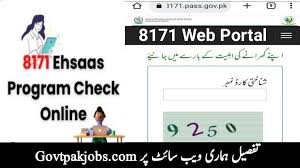In recent years, the Benazir Income Support Programme (BISP) has become a lifeline for millions of low-income families in Pakistan. However, with its growing popularity, there has also been a rise in fraudulent activities targeting unsuspecting beneficiaries. If you’re someone who receives payments through BISP, it’s crucial to stay alert and take the right steps to secure your payment. Scammers often disguise themselves as official agents or send fake SMS messages, luring innocent people into sharing sensitive information. These tactics are becoming more common, making awareness and caution more important than ever.
To avoid BISP scams, you must understand how these fraudsters operate. Many people receive messages claiming they’ve been selected for extra funds or are asked to “verify” their details through unknown numbers. Always remember: BISP never asks for your personal information via phone calls or texts. If anyone does, it’s a red flag. Protecting your ID card number, not trusting third-party agents, and always verifying payment notifications through the official BISP helpline or website are key ways to stay safe. Don’t let scammers steal what rightfully belongs to you—secure your payment with knowledge and vigilance.

How to Secure Your BISP Payment from Scammers
If you’re a regular beneficiary of the Benazir Income Support Programme, knowing how to secure your BISP payment from scammers is essential. Fraudsters often come up with creative ways to trick people—posing as BISP representatives or sending fake messages about payment verification. Never share your CNIC number, bank information, or PIN with anyone over the phone, no matter how “official” they sound.
The safest way to secure your BISP payment is to stay connected with the official sources. Only trust updates from the 8171 SMS service and avoid clicking on unknown links. Also, visiting your nearest BISP center or checking the official website is a smarter choice than trusting random callers. Scammers rely on confusion—don’t give them that chance.
How to Check BISP Payment Online Safely
One common trap people fall into is trying to check their payments on unauthorized websites. If you’re wondering how to check BISP payment online safely, make sure you only use the official BISP website (www.bisp.gov.pk) or the 8171 web portal. These platforms are secure, updated regularly, and won’t ask for unnecessary information.
To be clear, checking your BISP payment online safely means protecting your personal data. Never enter your CNIC number on third-party apps or suspicious pages. If a website looks odd or is asking for extra verification codes or payment to “unlock” details—close it immediately. Trust only official sources, and you’ll avoid falling into scams.
Common BISP Scams and How to Avoid Them
There are several common BISP scams floating around these days, and they all aim to do one thing—steal your personal or financial details. Some send fake SMS messages claiming you’re eligible for extra funds, while others call and ask for “account verification.” Sadly, many people fall for these tricks and lose their payments.
To avoid BISP scams, always ask yourself: “Did this message come from 8171 or an official BISP source?” If not, ignore it. Also, BISP does not send links asking for online payments or charges for registration. Educate your family members too, especially elders, as scammers often target those who aren’t tech-savvy. A little awareness goes a long way.
What to Do If You Receive a Fake BISP Call or SMS
If you ever get a suspicious message or call related to BISP, don’t panic—there are steps you can take. First, report the fake BISP SMS or call by contacting the official BISP helpline (0800-26477). Giving them information like the caller’s number or the content of the message can help stop others from getting scammed.
Second, never call back or engage with the scammer. People who know what to do if they receive a fake BISP call or SMS are less likely to fall victim. You should also tell others in your community so they can stay alert too. Scammers rely on silence and shame—let’s break that cycle with awareness.
How to Verify BISP Messages and Payments
Learning how to verify BISP messages and payments can protect you from losing your money to fraud. A real message from BISP will always come from the number 8171. If you get a message from any other number—even if it looks official—don’t trust it.
When it comes to payments, always confirm through the BISP 8171 web portal or by visiting a registered center. Avoid checking payment status through agents or unauthorized apps. Knowing how to verify BISP messages and payments gives you the power to stay in control—and that’s something every beneficiary deserves.
Final Thoughts
Securing your financial aid in today’s digital world isn’t just smart—it’s necessary. With scams getting more advanced, every BISP beneficiary must take responsibility to secure your BISP payment. It’s not just about avoiding fake calls or SMS—it’s about staying one step ahead. By recognizing red flags, not trusting unverified sources, and only using official BISP channels, you can protect your hard-earned support.
Always remember, knowing how to avoid BISP scams is just as important as receiving the payment itself. A moment of carelessness can result in the loss of funds meant for your family’s basic needs. Stay informed, educate your loved ones, and keep your personal details safe. When in doubt, always double-check with official platforms—because nothing is more valuable than your peace of mind and the security of your BISP payment.